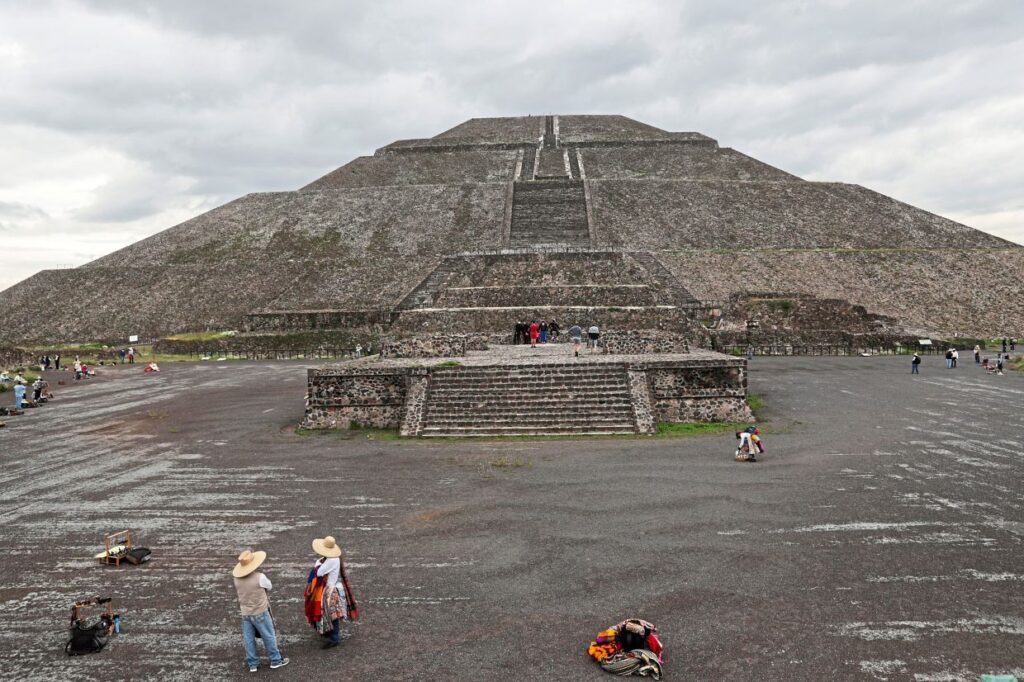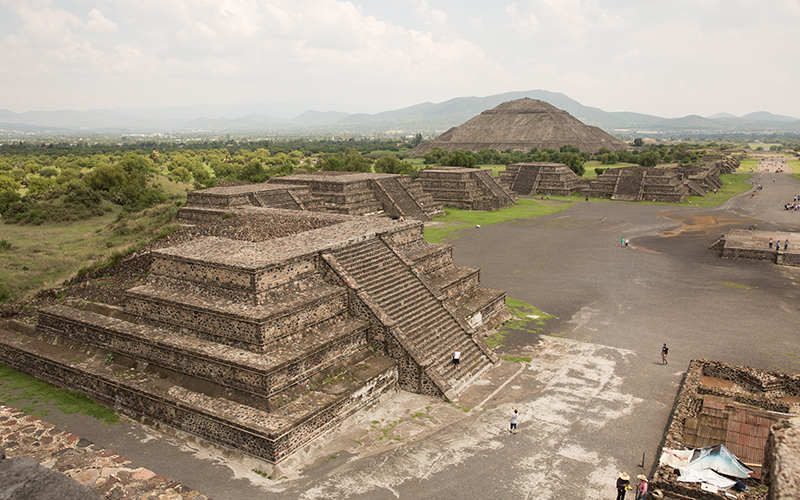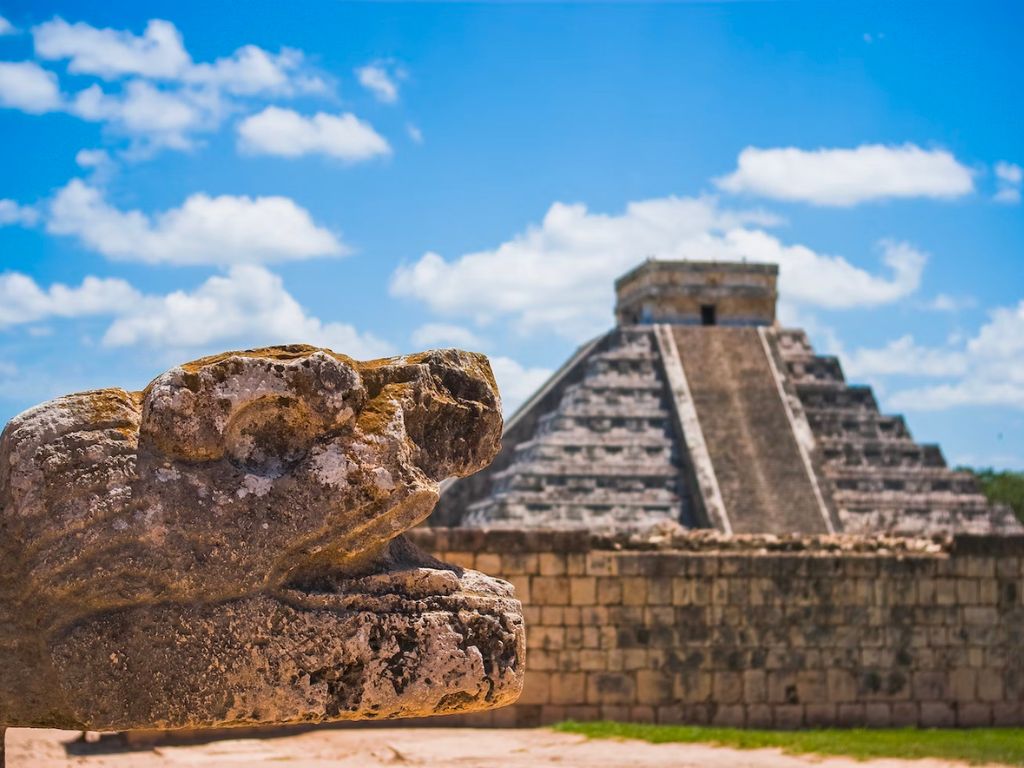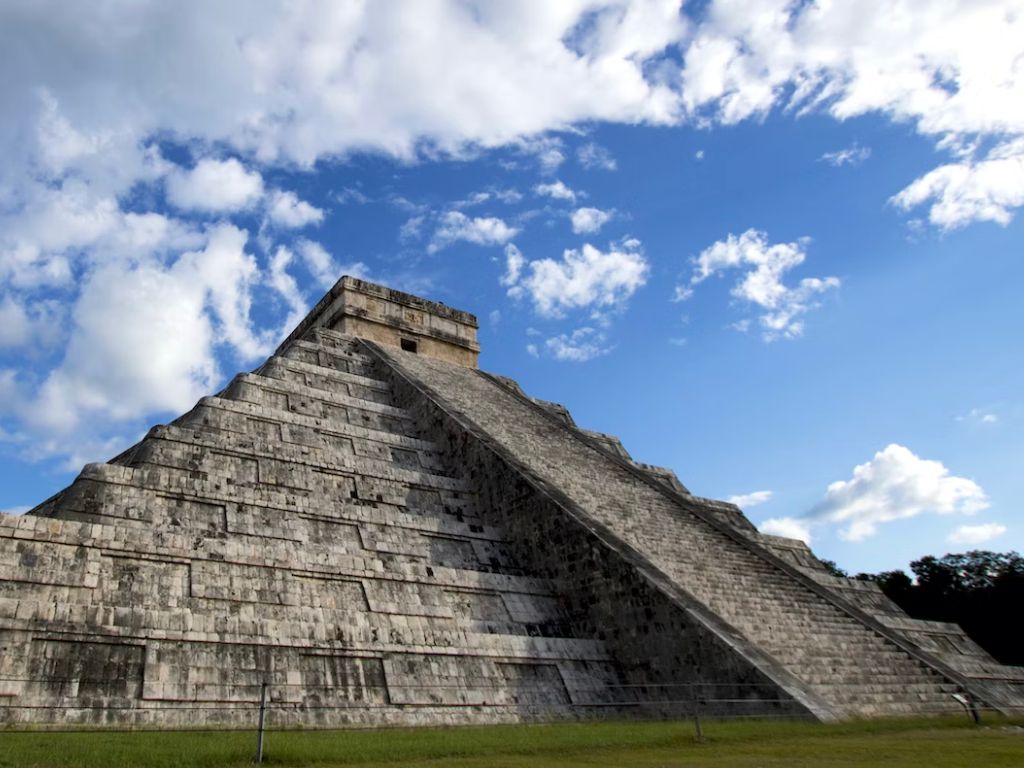Have you ever wondered about the captivating history behind Mexico’s ancient pyramids? You know, those majestic structures that seem to rise out of the ground, holding secrets from a bygone era. Well, in this article, we’ll delve deep into the mysteries of Mexico’s ancient pyramids and uncover the fascinating stories they have to tell.
When it comes to Mexico, most people usually think of vibrant culture, delicious food, and stunning beaches. But did you know that Mexico also boasts a rich archaeological heritage? The ancient pyramids scattered across the country are a testament to its intriguing historical past. From the hidden ruins of Teotihuacan to the iconic Chichen Itza, each pyramid holds its own story and significance. In this article, we’ll explore the timeline of these architectural wonders, learn about the civilizations that built them, and unravel the mysteries that still surround them today. So, if you’re curious to discover more about Mexico’s ancient pyramids, keep reading to embark on a journey through time and immerse yourself in the captivating history of this mesmerizing country.

Introduction
Mexico is a land of rich history and culture, known for its vibrant traditions and breathtaking landscapes. Among its many treasures are the ancient pyramids that can be found scattered across the country. These structures, built by civilizations long gone, continue to fascinate and intrigue both locals and visitors alike. In this article, we will delve deep into the mysteries surrounding Mexico’s ancient pyramids, uncovering their archaeological importance, exploring their religious and cultural significance, and discovering the incredible stories they hold.
Discovering Mexico’s Ancient Pyramids
Archaeological importance of Mexico’s ancient pyramids
Mexico’s ancient pyramids hold immense archaeological importance, providing a window into the lives of the civilizations that once thrived in the region. These structures are not mere architectural marvels; they embody the knowledge, beliefs, and skills of the ancient peoples who constructed them. From the Mayans to the Aztecs and various other indigenous civilizations, the pyramids serve as a testament to their ingenuity and advancement in areas such as engineering, mathematics, and astronomy.
Initial exploration and excavation
The journey to unravel the mysteries of Mexico’s ancient pyramids began centuries ago when explorers and archaeologists set foot on the land. These pioneers embarked on expeditions, painstakingly uncovering the remains of these once-thriving cities. Through their perseverance and dedication, they brought forth valuable artifacts, hieroglyphs, and insights that shed light on the life and traditions of the past.
Preservation and restoration efforts
As the ancient pyramids stand as a testament to Mexico’s rich heritage, efforts have been made to preserve and restore these historical landmarks. Recognizing their significance, measures have been taken to protect them from natural elements and human interference. The government, in collaboration with international organizations, has invested in conservation projects to ensure the pyramids stand tall for future generations to see and appreciate.

Great Pyramid of Cholula
Background and significance
One of the most awe-inspiring ancient pyramids in Mexico is the Great Pyramid of Cholula. Located in the state of Puebla, this pyramid holds great historical significance as it was once a ceremonial center for the ancient city of Cholula. Dating back to as early as the second century BCE, the pyramid’s construction spanned centuries, resulting in its immense size and cultural importance.
Impressive size and scale
Standing at over 180 feet tall, the Great Pyramid of Cholula is considered the largest pyramid in the world by volume. Its sheer size is a testament to the scale of ambition and collective effort exhibited by the ancient inhabitants. The pyramid’s base covers a vast area of more than 45 acres, giving it a commanding presence within the surrounding landscape.
Religious and cultural significance
The Great Pyramid of Cholula was a site of religious and cultural significance for the ancient inhabitants. It was dedicated to the deity Quetzalcoatl, the Feathered Serpent, who played a central role in Mesoamerican mythology. The pyramid’s design and architectural features reflect the beliefs and rituals of the people, offering a glimpse into their spiritual practices and worldviews.
Teotihuacan: City of the Gods
Introduction to Teotihuacan
Teotihuacan, often referred to as the “City of the Gods,” is an ancient Mesoamerican city located just outside of modern-day Mexico City. It was once a thriving metropolis and a center of power and influence in the region. Today, Teotihuacan is a UNESCO World Heritage site and attracts visitors from all over the world who come to witness its magnificent pyramids.
Pyramid of the Sun: Iconic symbol of Teotihuacan
At the heart of Teotihuacan lies the Pyramid of the Sun, an iconic symbol of the ancient city. This pyramid is one of the largest ever constructed in Mesoamerica, standing at an impressive height of 216 feet. Ascending the pyramid’s steps provides a breathtaking view of the surrounding landscape, allowing visitors to appreciate the grandeur and scale of Teotihuacan.
Pyramid of the Moon: Mysteries and rituals
Alongside the Pyramid of the Sun is the Pyramid of the Moon, another majestic structure that leaves visitors in awe. This pyramid, with its intricate architecture and enigmatic symbolism, has captivated researchers and explorers for centuries. It is believed to have served as a ceremonial and ritualistic site, where sacred ceremonies and offerings were made to honor the gods worshipped by the Teotihuacan people.

Palenque: A Hidden Gem
Discovery and excavation of Palenque
Nestled amidst the lush jungles of Chiapas, the ancient city of Palenque is a hidden gem that continues to reveal its secrets to this day. Rediscovered in the 18th century, Palenque has since become one of the most important archaeological sites in Mexico. Excavations have unearthed magnificent structures, including temples, pyramids, and palaces, offering insight into the daily lives and beliefs of the Mayans who inhabited the city.
Magnificent structures: Temples, pyramids, and palaces
Palenque is renowned for its well-preserved structures, showcasing the architectural prowess of the Mayans. The Temple of the Inscriptions, adorned with intricate carvings and hieroglyphs, stands as a testament to their artistic and intellectual achievements. The Palace, with its elegant courtyards and towering structures, provides a glimpse into the lives of the royalty and ruling elite who once resided within its walls. Each structure tells a story, inviting visitors to imagine the vibrant city that once thrived in the heart of the jungle.
Mayan art and inscriptions
Palenque is also famous for its exquisite Mayan art and intricate inscriptions. Elaborate stucco masks, reliefs, and murals adorn the structures, depicting religious scenes, mythological figures, and the triumphs of the ruling dynasty. The hieroglyphic texts found at Palenque have provided invaluable insights into Mayan history, chronicles of the city’s rulers, and their connections to the celestial world.
Pyramid of the Niches at El Tajin
El Tajin: An archaeological wonder
Located in the state of Veracruz, El Tajin is an archaeological wonder that showcases the extraordinary achievements of the ancient civilization that once thrived there. At the heart of El Tajin is the Pyramid of the Niches, a unique architectural masterpiece that has captivated researchers and visitors alike.
Unique architectural features
The Pyramid of the Niches stands out for its intricate design and remarkable architectural features. Its facade is adorned with numerous niches, creating a visually striking pattern that sets it apart from other pyramids in Mexico. These niches were thought to have held objects of religious or symbolic significance, although their exact purpose remains a subject of speculation and study.
Fascinating mythological connections
The pyramid’s design and symbolism have led to theories connecting it to various mythological figures and beliefs. The Totonac civilization, believed to have built the Pyramid of the Niches, held the god of thunder and rain, known as Tajin, in high esteem. Some researchers speculate that the pyramid’s design was influenced by the Totonac’s veneration of this deity, reflecting their cosmological beliefs and religious practices.

Tulum: Coastal Ruins
Spectacular views and location
Tulum, located on the stunning Caribbean coastline of the Yucatan Peninsula, is renowned for its picturesque ruins and breathtaking views. Perched atop a cliff overlooking the turquoise waters, the ancient city of Tulum offers a unique blend of history and natural beauty.
Mayan ruins overlooking the Caribbean Sea
Tulum’s ruins are distinctive in that they were constructed as a coastal fortress, strategically positioned to overlook the Caribbean Sea. The fortified walls provided protection against invasions, making Tulum an important trading hub between the Mayans and other regions. As visitors explore the ruins, they can imagine the bustling city that once stood amidst the tropical paradise.
Defensive structures and ceremonial buildings
Tulum’s ruins showcase a combination of defensive structures and ceremonial buildings. The Temple of the Frescoes, adorned with detailed murals depicting Maya deities and celestial events, offers a glimpse into the spiritual beliefs of the ancient inhabitants. The Castle, an imposing structure perched on a cliff, served as a lookout and a symbol of authority. The architectural blend of fortifications and religious buildings highlights the connection between the material and the sacred in Mayan culture.
Monte Albán: Urban Center of the Zapotec
Zapotec civilization and Monte Albán
Monte Albán, situated in the valleys of Oaxaca, was once the thriving urban center of the Zapotec civilization. This ancient city, constructed on a mountain plateau, represents the ingenuity and urban planning abilities of the Zapotec people. With its grand plazas, pyramids, and tombs, Monte Albán offers a glimpse into the political, religious, and social structures of the Zapotec society.
Pyramids and ancient tombs
The pyramids of Monte Albán stand as imposing structures that dominate the landscape. The towering Pyramid of the Sun and the intricate Pyramid of the Moon are testaments to the engineering skills and aesthetic sensibilities of the Zapotec builders. Additionally, ancient tombs have been discovered within Monte Albán, providing insights into the burial customs and rituals of the Zapotec elite.
Significance of astronomical alignments
One of the intriguing aspects of Monte Albán is its alignment with celestial events. The layout of the city and the positioning of its structures are believed to have been carefully planned to coincide with astronomical phenomena. These alignments suggest the importance of astronomy in Zapotec society and their deep reverence for the celestial world.

Paquimé: Ancient City of the Casas Grandes
Casas Grandes culture
Paquimé, known as the ancient city of the Casas Grandes, is located in the state of Chihuahua. This archaeological site offers a unique glimpse into the Casas Grandes culture, which flourished in northern Mexico from the 13th century onwards. The city’s architecture and artifacts tell the story of a society that was highly skilled in pottery, trading, and agriculture.
Distinctive architectural features
The architecture of Paquimé is distinct from other ancient cities in Mexico. Multi-story buildings, known as “casas grandes” or big houses, dominate the archaeological site. These houses had intricate architectural features such as interconnecting rooms, courtyards, and distinctive geometric designs. The unique layout and design of Paquimé reflect the ingenuity and creative expression of its inhabitants.
Trade networks and cultural influences
Paquimé’s location positioned it as a crucial center of trade and cultural exchange. Archaeological evidence suggests that the city had established extensive trade networks that connected it to distant regions. The artifacts found at the site demonstrate the influence of different cultures and highlight the significance of Paquimé as a cosmopolitan hub.
Coba: Jungle-Clad Ruins
Hidden among the lush jungle
Coba, an ancient city enveloped by the dense jungles of the Yucatan Peninsula, offers an adventure like no other. As visitors traverse through the ancient ruins, they witness the gradual unveiling of this once-thriving Mayan city, kept hidden by nature for centuries.
Unique Mayan road network
Coba is renowned for its unique system of elevated stone roads known as sacbeob, connecting various structures and settlements within the city. These roads, constructed with meticulous precision, allowed the Mayans to navigate through the dense jungle and facilitated trade and communication. Today, exploring the sacbeob offers visitors an immersive experience, allowing them to walk in the footsteps of the ancient Maya.
Tallest pyramid in the Yucatan Peninsula
At the heart of Coba lies the Nohoch Mul pyramid, the tallest pyramid in the Yucatan Peninsula. Standing at a height of 138 feet, climbing this pyramid is a thrilling experience that rewards visitors with breathtaking views of the surrounding jungle. The Nohoch Mul pyramid is a testament to the architectural and engineering skills of the Mayans, showcasing their ability to construct monumental structures that have withstood the test of time.
Theories and Speculations
Pyramid construction techniques
The construction techniques employed by the ancient civilizations of Mexico’s pyramids continue to fascinate researchers and experts. From the precise positioning of stones to the use of ramps and scaffolding, various theories have been put forth to explain how these impressive structures were built. Although much debate remains, ongoing excavations and advancements in technology have shed new light on the construction methods utilized by the ancient inhabitants.
Possible astronomical and religious purposes
The alignment of Mexico’s ancient pyramids with celestial events has sparked theories about their astronomical and religious significance. Some researchers believe that these structures were carefully oriented to mark solstices, equinoxes, and other celestial phenomena. Additionally, the pyramids were often dedicated to deities and served as ceremonial sites, suggesting a profound connection between religion, astronomy, and the construction of these monumental structures.
Cultural beliefs and rituals
The pyramids of Mexico offer glimpses into the cultural beliefs and rituals of the ancient civilizations. The intricate carvings, hieroglyphs, and artwork found on the pyramids often depict mythological figures, sacred ceremonies, and the life of the ruling elite. These representations provide valuable insights into the religious practices, social hierarchy, and the cosmological beliefs of the ancient civilizations.
World Heritage Sites
Recognition by UNESCO
Mexico’s ancient pyramids have been recognized and celebrated by UNESCO as World Heritage sites. This prestigious designation acknowledges their outstanding universal value and the need for their protection and preservation. It also highlights the importance of these sites as cultural and historical treasures that belong to all of humanity.
Protection and preservation efforts
Recognizing the importance of preserving these invaluable heritage sites, Mexico has implemented measures to protect and conserve its ancient pyramids. Government bodies and organizations work collaboratively to ensure the integrity of these structures, safeguarding them from natural deterioration and human interference. These preservation efforts aim to preserve the pyramids for future generations, allowing them to continue to inspire and educate.
Promoting tourism and education
The recognition of Mexico’s ancient pyramids as World Heritage sites has also led to increased tourism and educational opportunities. These sites attract visitors from all over the world who are eager to explore the rich history and cultural significance of these ancient civilizations. The revenue generated from tourism supports ongoing conservation efforts and contributes to the local economies surrounding these sites.
Modern Day Exploration and Research
Advancements in archaeological techniques
With the advent of modern technology and scientific advancements, explorations and research into Mexico’s ancient pyramids have reached new heights. Ground-penetrating radar, LiDAR technology, and other non-invasive techniques have provided researchers with unprecedented insights into the hidden secrets beneath the surface. These technological advancements continue to push the boundaries of our understanding and shed light on the mysteries surrounding the pyramids.
Ongoing excavations and discoveries
Excavations at Mexico’s ancient pyramids are ongoing, and new discoveries continue to be made. Each excavation brings us closer to unraveling the mysteries of the past, revealing new artifacts, carvings, and architectural features that deepen our understanding of the ancient civilizations. Ongoing research also allows for reinterpretation of previously discovered artifacts and texts, leading to new perspectives and theories.
Collaborative efforts with international experts
International collaboration is key in the exploration and research of Mexico’s ancient pyramids. In the spirit of shared knowledge and expertise, archaeologists, historians, and researchers from around the world collaborate on excavation projects, exchanging methodologies and discoveries. These collaborative efforts foster a global understanding of our shared history and reinforce the importance of preserving and appreciating the cultural heritage found within Mexico’s ancient pyramids.
Conclusion
The ancient pyramids scattered across Mexico remain enigmatic and captivating, continuing to captivate the imagination of all who encounter them. Construction of these monolithic structures required immense knowledge, skill, and dedication, serving as a testament to the advanced civilizations that once thrived in the region. From the Great Pyramid of Cholula to the coastal ruins of Tulum, each pyramid tells a story of culture, spirituality, and human ingenuity. As we unravel the mysteries surrounding Mexico’s ancient pyramids, we gain a deeper appreciation for the rich history and cultural legacy that these magnificent structures represent. Exploring these archaeological wonders not only allows us to better understand our past but also connects us to the vibrant tapestry of Mexico’s diverse heritage.